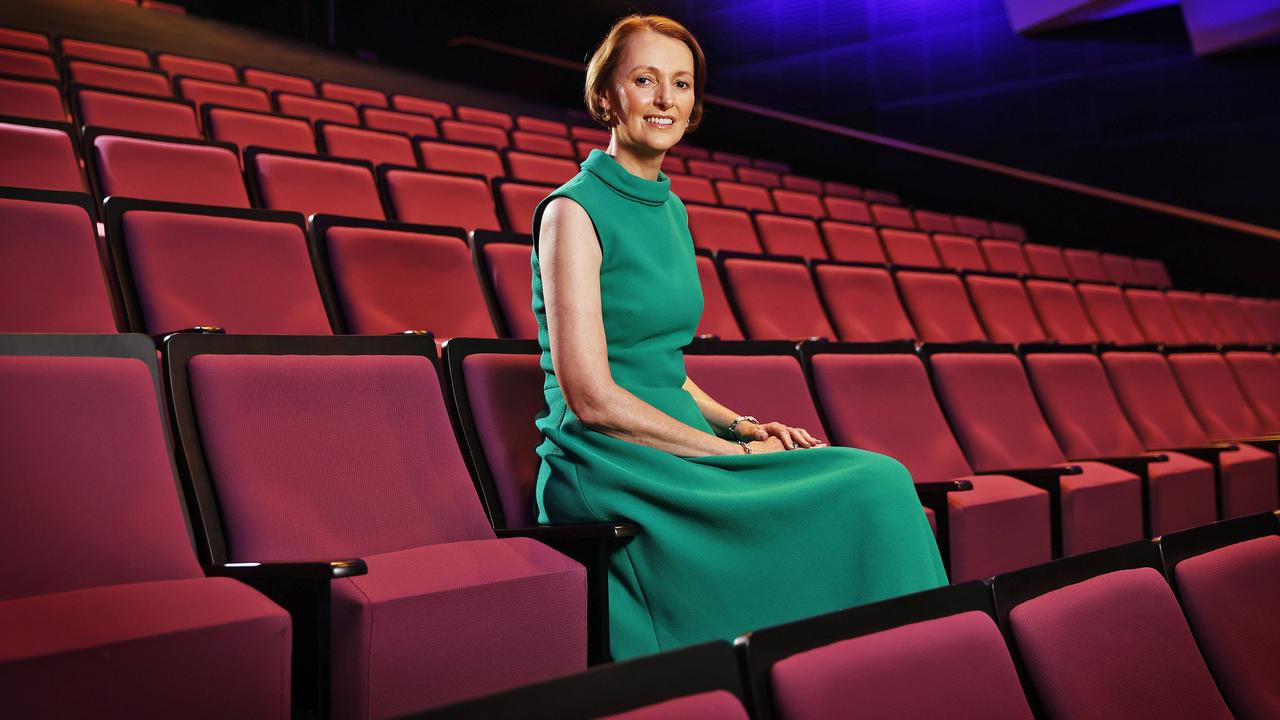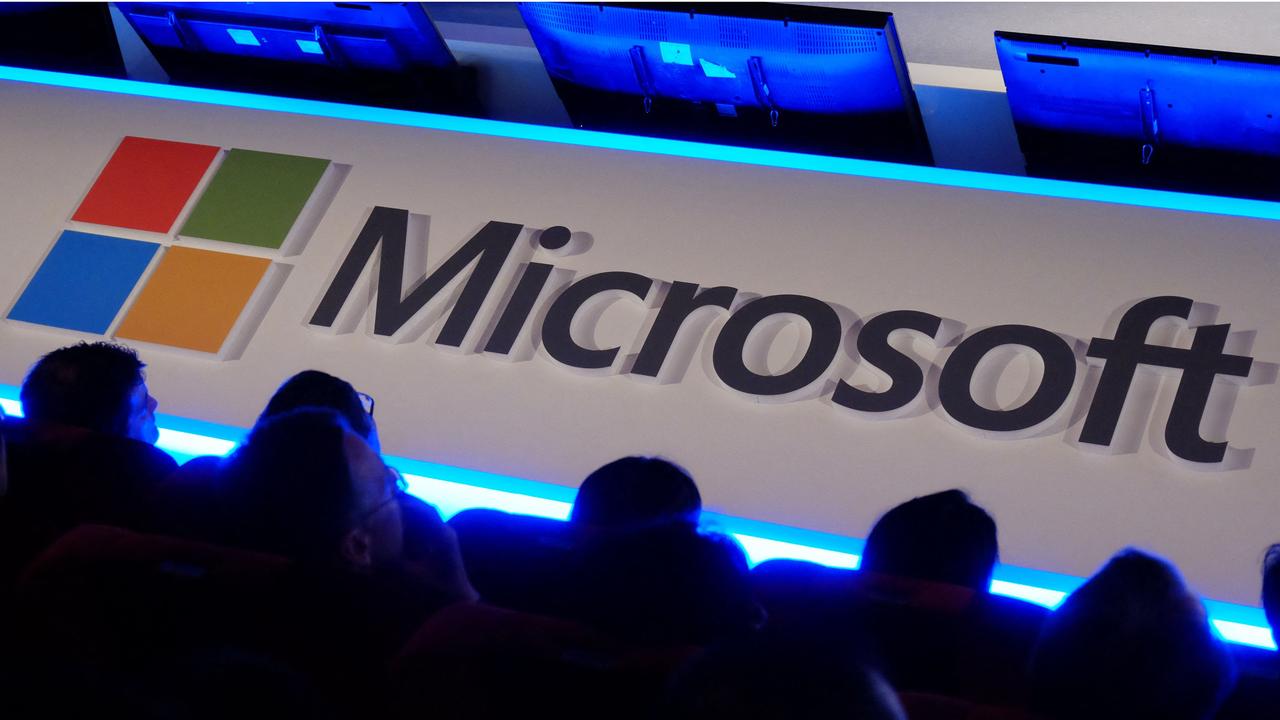This is our moment: Telstra CEO Vicki Brady maps out AI vision
Vicki Brady says big telcos have once again found themselves at the front of a tech revolution.

Business
Don't miss out on the headlines from Business. Followed categories will be added to My News.
The way Telstra boss Vicki Brady sees it, telcos are on the cusp of another big shift.
Artificial intelligence is already starting to reshape her industry as much as other turning points such as the rollout of broadband; the move from analog to digital; or the arrival of the smartphone.
Big telco’s such as Telstra once again have found themselves right in the middle of a tech revolution. This time their role is as the enablers of AI. The networks they build and operate will need to be big and sophisticated enough and have the capacity to support the massive uplift in demand for data that’s on the way.
Tech giants from Apple, Amazon, Microsoft and Meta are now spending tens of billions of dollars annually on their own AI arms race. But the technology will only be as good as the pipes carrying the huge volume of data to all corners of the country.
“It is one of those moments … It is a real point again where what we do and deliver has to transform,” Brady says.

The Telstra boss is speaking to The Australian ahead of a keynote speech she is scheduled to deliver at the GSMA Asia conference on Tuesday in Seoul. The theme will be discussing the role of telcos in the era of AI.
Brady says AI goes right to the heart of Telstra’s mission, and that’s to support connectivity. And this means Telstra has to already start building the infrastructure to carry data for AI-based tech. But the demands and complexity of the technology means telcos need to get the foundations right.
The most telling sign of the looming increase in demand for data is the proliferation of giant data centres that house graphics-processing units, the powerful chips used to train and run generative AI. There’s an investment boom under way in data centres; this month US asset giant Blackstone paid almost $24bn for Australian operator AirTrunk.
Capacity in Australia is expected to increase by more than 18 per cent at an annualised rate will into next decade.
“That’s all got to be connected. None of that can operate as an island,” Brady says. “We’re going to see massive demand for connectivity to help support AI and all of its benefits that it can bring.
“There’s a need for that connectivity to get more sophisticated again. So we are in an investment cycle to help enable it.”
Telcos and tech
Brady talks about the five layers globally needed for AI to be at its best: the right people; the right applications; the ability to process data; the computing power and finally the connectivity – that’s where players such as Telstra come in.
Big data represent big revenue opportunities for telcos.
It offers a pivot away from their more challenged markets such as corporates, where telco services are increasingly moving on to the cloud. The amount of data moving through Telstra’s mobile network grew by 20 per cent last financial year.

It also means big investment dollars are needed, with telcos under pressure to build the capacity to support this explosion of computing power. This means a step-up in capex plans to lay cables and build out existing wireless networks.
Telstra is already spending $1.6bn on the ultra-fast intercity fibre network under construction and connecting Australia’s major capitals. The project is rolling out more than 14,000km of new cable, with 2000km already built. In an indication of who the biggest users of AI will be, Telstra signed on Microsoft as one of the foundation partners of its new network.
Brady points out AI and automation are not necessarily new technology. Indeed, most big businesses have been using it in some form or another for years.
However, the step change seen in recent years, first through OpenAI, then the adoption into everyday systems by tech giants such as Microsoft, Google and Meta, means the most powerful technology – generative AI – has been democratised.
“What’s happened is generative AI suddenly opened up AI for everyone, because you can engage in it, in normal language.
“You don’t need to be a coder. You don’t need to understand it. It’s provided a real front door to this technology.”
Transformation
AI will also be a big theme of Telstra’s 2030 strategy, with Brady and her top executives putting the finishing touches on the telco’s next five-year transformation program. She will have to anticipate how jobs will change through AI and what sort of investments will be needed to keep her network ahead of the technology.
Using AI through Telstra’s business is about giving her staff the right tools from the top and into the call centres, she says. However, Brady is a realist: Like the evolution of any technology, it ultimately means there will be some functions that move to full automation and jobs will be lost.
“All jobs are going to look different in five years’ time,” Brady says. “Our approach is to invest in our people, to leverage this so that it makes their jobs better, delivers better outcomes for our customers. But of course, as you deploy new technology, you’re always looking to be more efficient in the way you run your business as well.”
Her 2030 strategy could have Telstra play a bigger role in data centres, not the hyper-scaler sites but the mini-facilities that physically sit closer businesses.
The telco already operates six data centres but is exploring options for so-called “edge” sites using the facilities of its fixed network exchanges, which are already hooked up to the communications network and high-capacity energy grid.

GSMA is the umbrella group for operators of mobile networks around the world, and is responsible for setting technology standards across the industry. It runs the annual Mobile World Congress, which has a consumer thread running through it. The Asia briefing is the serious stuff about network infrastructure.
Brady’s speech to GSMA puts Telstra back on the global stage. She delivered a keynote address to the congress in Barcelona last year. This week’s South Korean conference gets the telco in front of some of Asia’s biggest operators, with Telstra a backer in subsea cables that cross the region.
Brady is working through what AI can deliver her business. Already there are savings in the background. Telstra recently switched on smart modems across its fixed broadband business.
Already, AI has helped identify and take more than 500,000 preventive actions that avoided service interruptions and the need for customers to call out or for Telstra to call them. She estimates this has delivered a saving of $13.5m in just six months. Elsewhere, Telstra is trialling AI on the mobile network to help save power by putting unused sites into sleep mode and switching on as demand returns. So far, that’s trimmed consumption by about 2 per cent a day. That’s significant, with energy one of Telstra’s biggest single costs outside of employees.
Still, it’s the potential of the technology that is energising Brady. That’s why it’s critical to get the infrastructure element of it right. “You absolutely need private sector and government working to make this possible and really unlock it for the country.”
More Coverage
Originally published as This is our moment: Telstra CEO Vicki Brady maps out AI vision









